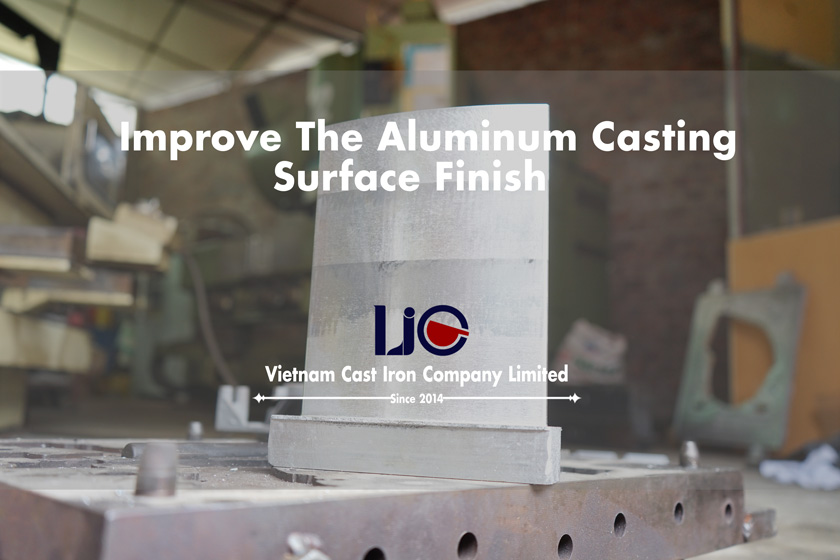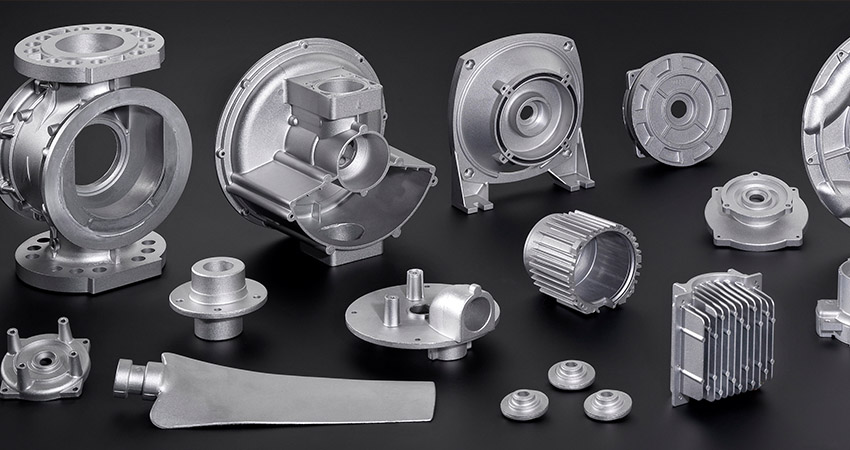Aluminum Casting for engine blocks: Real-world examples
Understanding the Advantages and Varieties of Aluminum Castings in Market
Aluminum castings have become significantly crucial throughout different industries because of their one-of-a-kind buildings and producing versatility. Their lightweight and corrosion-resistant nature makes them suitable for demanding applications. Various spreading approaches enable for exact and intricate designs. As markets develop, recognizing the range of light weight aluminum casting choices and their advantages is vital. This exploration questions regarding their future function in production and sustainability. What exists in advance for light weight aluminum in these fields?
The Fundamentals of Aluminum Casting Processes
Although light weight aluminum casting procedures differ in method, they all share a common objective: to change molten aluminum right into specific shapes and components. The key methods of light weight aluminum casting consist of sand casting, die spreading, and financial investment spreading. In sand casting, mold and mildews are produced utilizing sand, allowing for detailed styles but often leading to a harsh surface coating. Die casting utilizes high-pressure shot of liquified aluminum right into metal mold and mildews, generating high precision and smooth surface areas, appropriate for automation. Financial investment spreading, or lost-wax spreading, involves creating a wax pattern coated with a ceramic shell, supplying remarkable information and dimensional precision. Each technique has its details applications and considerations, including price, manufacturing quantity, and intricacy of the forms produced. Comprehending these basic strategies is essential for sectors that rely on light weight aluminum castings to meet their layout and functional demands.
Key Advantages of Using Aluminum Castings
Aluminum castings provide many advantages that make them a favored choice in various markets. Among the essential advantages is their lightweight nature, which allows for much easier handling and decreased shipping prices. This particular adds to boosted energy efficiency, particularly in automobile and aerospace applications. In addition, light weight aluminum shows outstanding deterioration resistance, expanding the life-span of elements and minimizing maintenance demands.
An additional advantage is the flexibility of light weight aluminum castings, which can be molded right into complex forms, enabling ingenious styles that typical products might not accommodate. The thermal and electrical conductivity of aluminum additionally makes it perfect for applications calling for warmth dissipation or reliable electrical links. Furthermore, light weight aluminum castings are recyclable, lining up with sustainability goals and minimizing environmental effect. On the whole, the combination of strength, durability, and flexibility makes aluminum castings a critical part in contemporary production practices across numerous markets.
Common Kinds of Aluminum Castings
Aluminum castings are created with numerous approaches, each fit for different applications and demands. Amongst one of the most typical techniques are sand spreading, which provides adaptability and cost-effectiveness, and pass away casting, understood for its accuracy and efficiency. Comprehending these processes is crucial for choosing the appropriate spreading method for particular industrial requirements.
Sand Casting Process
A substantial section of aluminum castings in sector is generated with the sand casting procedure, which is renowned for its versatility and cost-effectiveness. This approach involves developing a mold and mildew from a sand combination, permitting for the manufacturing of complex shapes and large components. Sand spreading is especially advantageous for little to medium-sized production runs, as it needs marginal first financial investment in tooling. The process begins with pattern production, adhered to by mold and mildew prep work, putting liquified light weight aluminum, and finally, cooling down and ending up. The high thermal conductivity of light weight aluminum warranties also cooling down, decreasing the danger of problems. Sand spreading continues to be a favored choice for manufacturers looking for efficiency and adaptability in their light weight aluminum casting applications.
Die Casting Techniques
Die casting techniques represent a highly reliable method for generating light weight aluminum castings, particularly matched for high-volume manufacturing. These techniques mainly include 2 common kinds: hot chamber and cold chamber die spreading. In hot chamber pass away spreading, the liquified aluminum is injected into the mold from a tank that is warmed, making it perfect for low-melting-point alloys. Alternatively, chilly chamber pass away casting entails pouring the liquified aluminum right into a separate chamber before injection, which fits higher melting-point products. Both techniques use accuracy fit complex geometries and achieving excellent surface coatings. Furthermore, die casting is known for its fast cycle times, reducing manufacturing prices while maintaining consistency in top quality across big amounts of components.
Applications in the Automotive Industry
Transforming car design and performance, light weight aluminum castings play a crucial duty in the automobile market. These castings contribute significantly to weight reduction, improving gas effectiveness and overall automobile characteristics. Key applications include engine blocks, transmission real estates, and suspension components, where their lightweight nature and stamina are vital.
Aluminum castings likewise allow for complicated geometries, making it possible for makers to produce detailed styles that enhance airflow and reduce drag. This ability is especially valuable in electric and hybrid cars, where performance and effectiveness are vital.
Furthermore, the deterioration resistance of aluminum extends the life expectancy of auto components, lowering maintenance costs and enhancing automobile dependability. The convenience of aluminum castings supports both automation and customized applications, making them a favored option among automotive designers and designers. Aluminum Casting. As the market continues to innovate, aluminum castings will stay a crucial element in the quest of advanced vehicle modern technologies
Aerospace Market Usage
In the aerospace sector, aluminum castings are essential to the design and capability of airplane parts. These castings are Homepage used in various applications, consisting of engine parts, architectural components, and indoor fittings. Their light-weight nature contributes to boosted fuel go to my blog efficiency and total performance, which is necessary in aerospace engineering.
Aluminum castings additionally supply superb strength-to-weight proportions, allowing suppliers to produce intricate layouts without endangering structural integrity. The ability to produce complicated geometries makes aluminum casting a favored choice for elements that require precision and reliability.
Additionally, aluminum's resistance to deterioration improves the long life of aerospace components, minimizing upkeep costs and boosting safety and security (Aluminum Casting). The spreading process allows for high-volume production, satisfying the industry's demands for efficiency. In general, light weight aluminum castings play a crucial role beforehand aerospace technology and optimizing airplane layout, adding to the sector's continuous advancements

Advantages Over Other Materials
Aluminum castings supply considerable benefits over other products, making them a preferred option in numerous sectors. Among the primary benefits is their light-weight nature, which adds to minimized energy intake and enhanced efficiency in applications such as auto and aerospace. Additionally, light weight aluminum displays superb deterioration resistance, permitting extended durability and lowered upkeep expenses.
The product's exceptional thermal and electrical conductivity further boosts its allure, especially in applications needing warm dissipation or effective energy transfer. Aluminum Casting. Aluminum castings likewise provide excellent dimensional security, making sure precise tolerances and minimizing the likelihood of problems during the manufacturing process
The flexibility of aluminum allows for complicated forms and intricate layouts, which can be accomplished through different casting approaches. This adaptability makes aluminum a valuable alternative for manufacturers aiming to introduce while keeping cost-effectiveness and top quality. In conclusion, aluminum castings stand out due to their special mix of properties that provide to varied industrial requirements.
Future Trends in Aluminum Casting Modern Technology
Future fads in aluminum casting innovation are progressively concentrated on automation and the growth of sophisticated alloys. Automation stands to enhance efficiency and precision in casting processes, lowering labor prices and boosting product uniformity. Simultaneously, advancements in alloy formulations promise to expand the variety of applications for light weight aluminum castings, resolving details performance requirements in discover this info here various markets.
Automation in Casting Processes

Advanced Alloys Development
With the ongoing advancement of product scientific research, the growth of innovative alloys is set to change aluminum casting technology substantially. These ingenious alloys are made to improve mechanical residential properties, corrosion resistance, and thermal stability, providing to diverse commercial applications. Scientists are concentrating on crossbreed alloys that integrate aspects such as magnesium, silicon, and zinc to accomplish peak performance. In addition, advancements in computational modeling and simulation are making it possible for the forecast of alloy actions under different problems, simplifying the design procedure. The combination of reusing technologies is additionally becoming crucial, permitting suppliers to produce high-performance light weight aluminum castings while minimizing environmental impact. As these patterns continue, the light weight aluminum casting industry is likely to witness substantial improvements in effectiveness, sustainability, and item top quality.
Often Asked Questions
Just How Is Aluminum Casting Environmentally Friendly?
The question of light weight aluminum casting's environmental friendliness develops from its recyclability and reduced energy intake contrasted to other metals. In addition, advancements in sustainable methods further improve its eco-friendly online reputation within making procedures.
What Is the Regular Life Expectancy of Aluminum Castings?
The normal life-span of aluminum castings differs based upon application and atmosphere, generally ranging from numerous years to years. Variables such as direct exposure to corrosive components and mechanical anxiety can considerably affect their sturdiness and long life.
Can Aluminum Castings Be Reused?
Aluminum castings can certainly be recycled. This process considerably reduces waste and conserves resources, allowing producers to recycle materials successfully. Reusing light weight aluminum castings adds to sustainability and reduces the environmental impact connected with light weight aluminum production.
What Are the Typical Issues in Aluminum Castings?
Common defects in aluminum castings include porosity, contraction, imbalance, and surface area flaws. These problems can emerge from poor putting methods, inappropriate alloy composition, or inadequate cooling, ultimately impacting the quality and efficiency of the last product.
Exactly how Do I Pick the Right Aluminum Casting Process?
Picking the appropriate aluminum casting process requires examining production quantity, component complexity, and preferred buildings. Elements such as expense, preparation, and product qualities likewise affect the choice, making certain optimal outcomes for particular applications.